
Preparar linguiças é uma arte e um prazer, cada linguiça pode ser preparada com temperos e tipos carnes diferentes, trazendo sabores únicos para cada criação. Use sua criatividade e utilize as dicas básicas para obter ótimos resultados.
- Para que a linguiça fique suculenta, o ideal é que contenha entre 20 e 30 porcento de gordura;
- Não use muito sal, o ideal é a proporção de 10 gramas de sal para cada 500 gramas de carne, mas dependendo do gosto pessoal e regional é preciso adaptar as medidas. Lembre-se que sal em excesso faz mal à saúde.
- Mantenha sempre todos os equipamentos e utensílios gelados.
- Congele a gordura caso vá adicioná-la à parte na carne.
- Tempere a carne em cubos de 1 ou 2 cm e deixe marinar por, pelo menos, 30 minutos na geladeira antes de moer.
- Pode-se deixar a carne quase congelada antes de moer, isso fará com que a perda de gordura seja reduzida, consequentemente deixando-a mais suculenta.
- Caso adicione líquidos ao misturar a carne moída, prefira líquidos bem gelados ou congelados e raspados.
- Misture bem a carne já moída para trabalhar a proteína e obter uma consistência final homogênea e firme. Linguiças que não foram muito bem misturadas ficam com a carne mais quebradiças. O mesmo ocorre com hamburgueres, por exemplo.
- Na hora de embutir compacte bem a massa no canhão para não entrar bolhas de ar no meio da massa;
- Após embutir deixe as linguiças descansarem de 4 a 12 horas na geladeira para a massa compactar e firmar.
- Ao cozinhar ou assar a linguiça, utilize preferencialmente uma tmeperatura entre 65 e 72 graus.
Caso queira saber mais leia Como fazer linguiça?
-
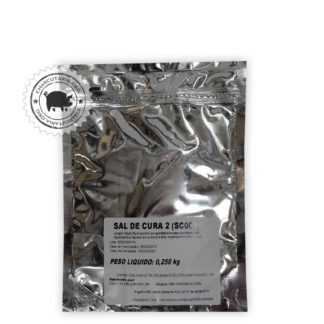 Sal de cura 2R$ 8,00
Sal de cura 2R$ 8,00 -
 Sal de cura 1R$ 8,00
Sal de cura 1R$ 8,00 -
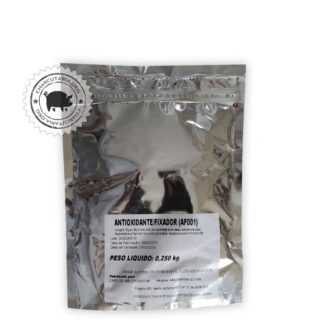 Antioxidante FixadorR$ 23,00
Antioxidante FixadorR$ 23,00 -
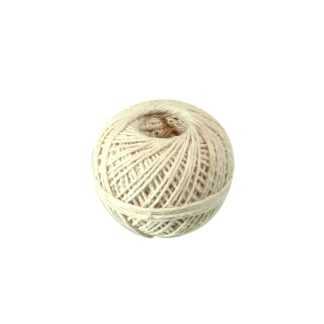 Barbante culinárioR$ 7,90
Barbante culinárioR$ 7,90 -
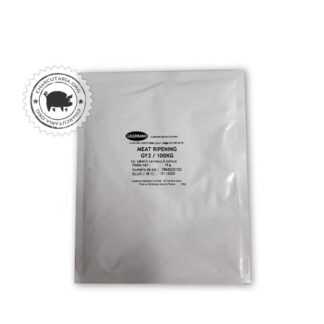 Cultura StarterO preço original era: R$ 69,90.R$ 59,90O preço atual é: R$ 59,90.
Cultura StarterO preço original era: R$ 69,90.R$ 59,90O preço atual é: R$ 59,90. -
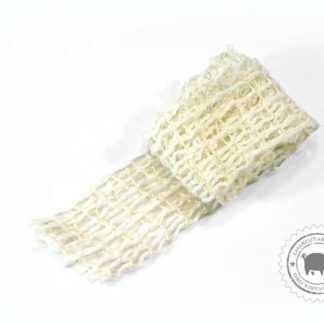 Rede elástica culinária 50mmR$ 15,00
Rede elástica culinária 50mmR$ 15,00 -
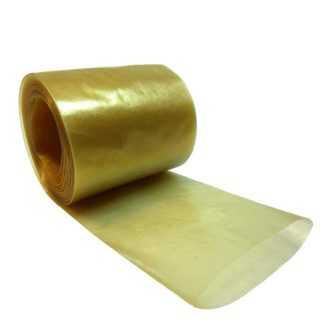 Tripa de colágeno 45mm rolo 5 metros salameR$ 25,00
Tripa de colágeno 45mm rolo 5 metros salameR$ 25,00 -
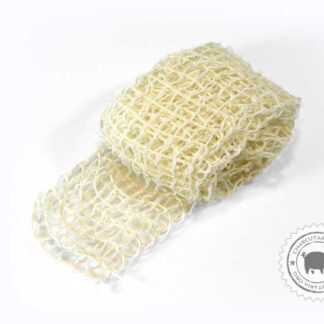 Rede elástica culinária 65mmR$ 18,00
Rede elástica culinária 65mmR$ 18,00 -
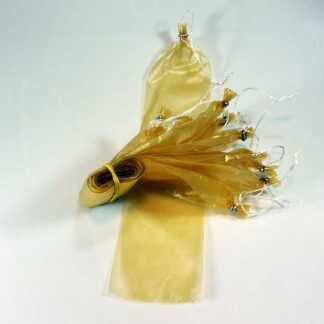 Tripa de colágeno salame 45mm 10 unidades amarradasR$ 22,00
Tripa de colágeno salame 45mm 10 unidades amarradasR$ 22,00 -
 Tripa de colágeno 80mm copa e salameR$ 29,90
Tripa de colágeno 80mm copa e salameR$ 29,90 -
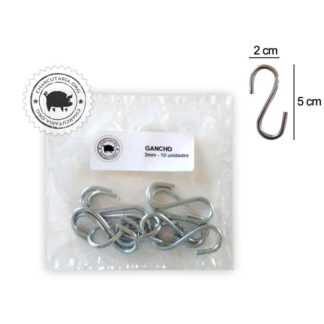 Gancho GalvanizadoR$ 12,00
Gancho GalvanizadoR$ 12,00 -
 Tripa de colágeno salame 50mm 10 unidades amarradasR$ 24,00
Tripa de colágeno salame 50mm 10 unidades amarradasR$ 24,00


Boa noite !!!! Tenho algumas dúvidas sobre a produção de linguiça :
1) o ideal é fazer a massa temperada e deixar na geladeira por 2 dias para que faça a cura e absorva mais tempero ?
2) apos feito os gomos, precisa fazer algum furo na linguiça para evitar bolsa de ar ?
3) comprei um sal de cura LF. ( rápida) que na embalagem está marcando em sua composição : sal refinado + conservantes ins 250 (0,7%) … É pouco nitrito ?
Obrigado
1)A cura ocorre antes e depois de embutir, misture bem a massa, espere duas horas e já pode embutir.
3)Só fure onde tiver muito ar visível.
3)O sal de cura tradicional tem entre 5% e 6,25% de nitrito de sódio. Deve ter comprado um mix de tempero pronto. Na instrução diz quanto dessa “cura” por kg de carne?
Na verdade não. Só fala que é sal de cura rapida e pra usar de acordo com a legislação. Mas,nao da a orientação do fabricante.
E foi o próprio dono da loja que me vendeu. Mas,lendo as suas dicas e indicações eu fiquei meio desconfiado.
Por via das dúvidas,vc indicaria alguma marca que seja mais segura quanto a porcentagem de nitrito e nitrato ?
Abraço
BRC, Kraki, Ibrac, Duas Rodas, Bremil, Conatril. O último que usei é da Conatril, está funcionando bem. Vem especificado quanto tem de cada aditivo e a quantidade que deve ser adicionada na carne. Muitas lojas compram em quantidade grande e reembalam omitindo os dados do fabricante. Tente comprar com a embalagem do fabricante.
Minhas linguiças depois de empacotar sai muito suco.
Pode testar estabilizantes e emulsificantes. Fosfatos, lecitina, proteína de soja, amidos…
Renato,
Não sei se você faz linguiça comercialmente ou de forma caseira. Vou assumir produção caseira.
Primeiro: Não deixe a temperatura da massa de carne passar de 12ºC durante qualquer etapa. Até essa temperatura a gordura presente na carne forma um gel natural com a proteína e a água. Acima disso ela perde essa propriedade e deixa de segurar a água, fazendo o produto deixar de ser tenro.
Segundo: Para forma essa liga não basta só moer a carne já temperada e já tocar ela prá dentro da tripa. A gordura exige ser misturada com a proteína e a água para formar a massa. para isso você precisa misturar a ou com uma batedeira planetário ou à mão mesmo. Vai misturando com a mão Até que grude uma massa de carne em sua mão.
Faço salaminho, mas em pouco tempo ele fica duro igual uma pedra, quero saber o que fazer para ele manter a maciez por mais tempo.
Ele precisa parar de perder umidade. Fica duro pois perde cada vez mais água. Envolva bem em um filme pvc e/ou coloque em um pote hermético.
Todos os utensílios são mantidos bem gelados para evitar o derretimento da gordura. Isso é crucial em salsichas emulsificadas, pois a emulsão é justamente da gordura com água e proteína, então não pode aquecer, mas no caso das linguiças é opcional. Mantenha só os potes, carnes e gordura bem refrigerados e manipule o mínimo possível.
Ví em várias receitas que é necessário manter o moedor gelado, mas o moedor que tenho em casa é elétrico da britânia e não tem como gelar todas as partes e nem sei se posso gelar as partes móveis por conta da água que condensa depois. Qual a finalidade de manter os utensílios gelados? Caso não proceda dessa forma, quais perdas posso ter?
Pedro, Para gelar seu moedor basta moer algumas pedras de gelo antes de moer a carne. Use o disco de maior furo e jogue cubos de gelo em uma proporção que o seu moedor suporte sem grandes esforços. Com isso você gelará as partes do moedor que efetivamente entram em contato com a carne. Imagino a esta altura a sua pergunta: Por que manter a carne gelada? A carne deve ser mantida gelada não por conta de contaminação e sim por conta do que chamo de temperatura “mágica”. A temperatura mágica fica entre 4ºC e 12ºC. Abaixo de 4ºC até 0ºC a água no estado líquido passa a dilatar até formar cristais de gelo. Essa dilatação quebra a parece celular da carne, reduzindo a capacidade de retenção de líquidos e consequentemente o produto final não será tenro . Acima de 12ºC a gordura da carne perde a propriedade de se ligar com a água e a proteína e formar uma pasta que ao ser cozida tenha uma consistência agradável, ou seja, no popular dizemos que “perde a liga” e esfarela ao cozinhar. A esta altura você já está pensando minha geladeira no mínimo não vai gelar abaixo de 4ºC, então… Leia mais »
Bom dia gostaria de saber se eu manter os utensílios, e a proteína bem gelada ao manipular me garante que a linguiça quando for frita ou assada não vai estourar ou abrir?
Marco, manter gelado ajuda na estabilidade e consequentemente evita que estoure. Na linguiça fresca muita água na massa vai gerar muito vapor e estourar, muito calor na hora de assar também vai estourar qualquer linguiça, muita pressão na hora de embutir deixará pouca margem de dilatação para a tripa… ou seja, tem que ficar atento durante todo o processo para ter um bom produto.